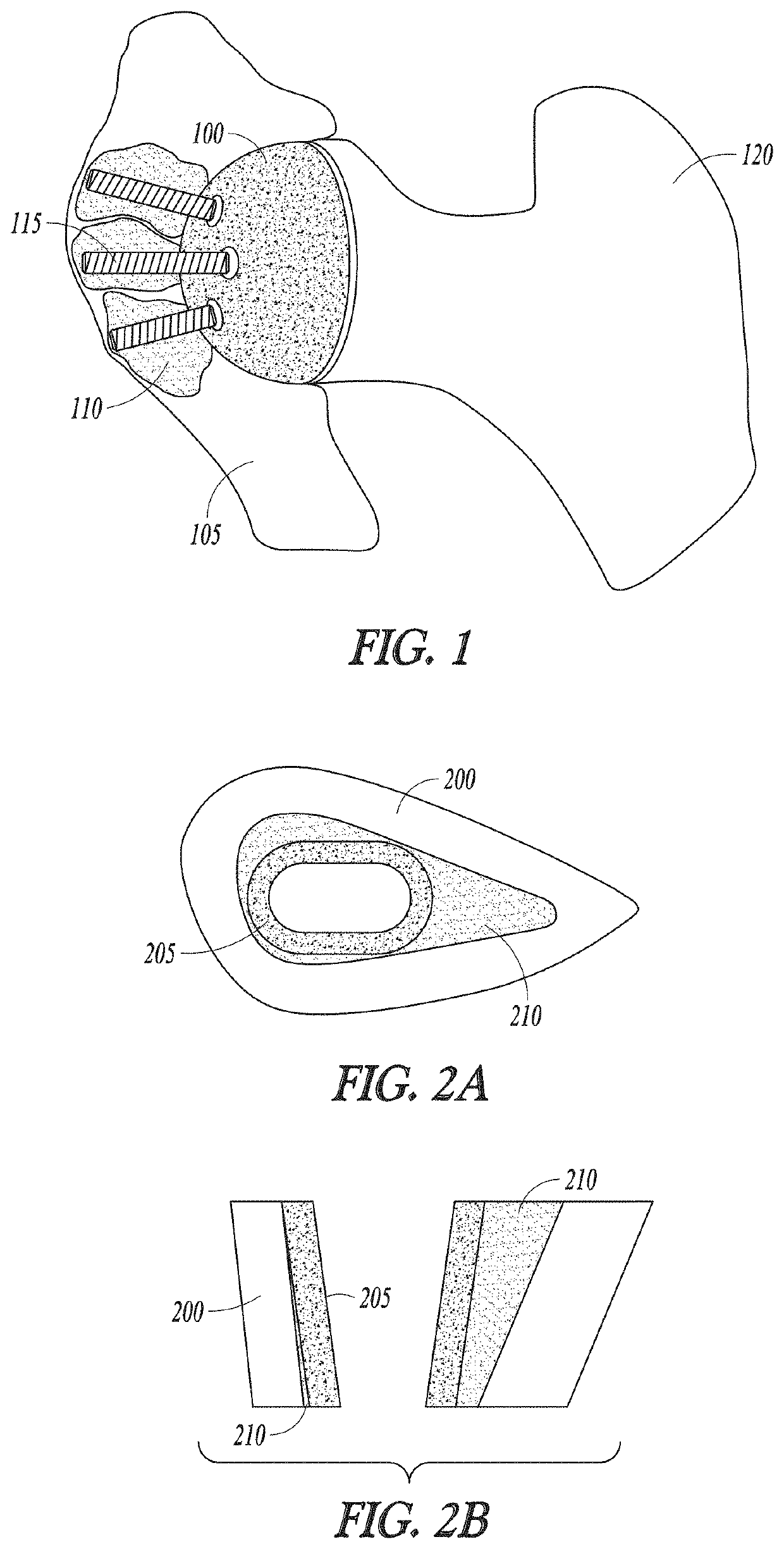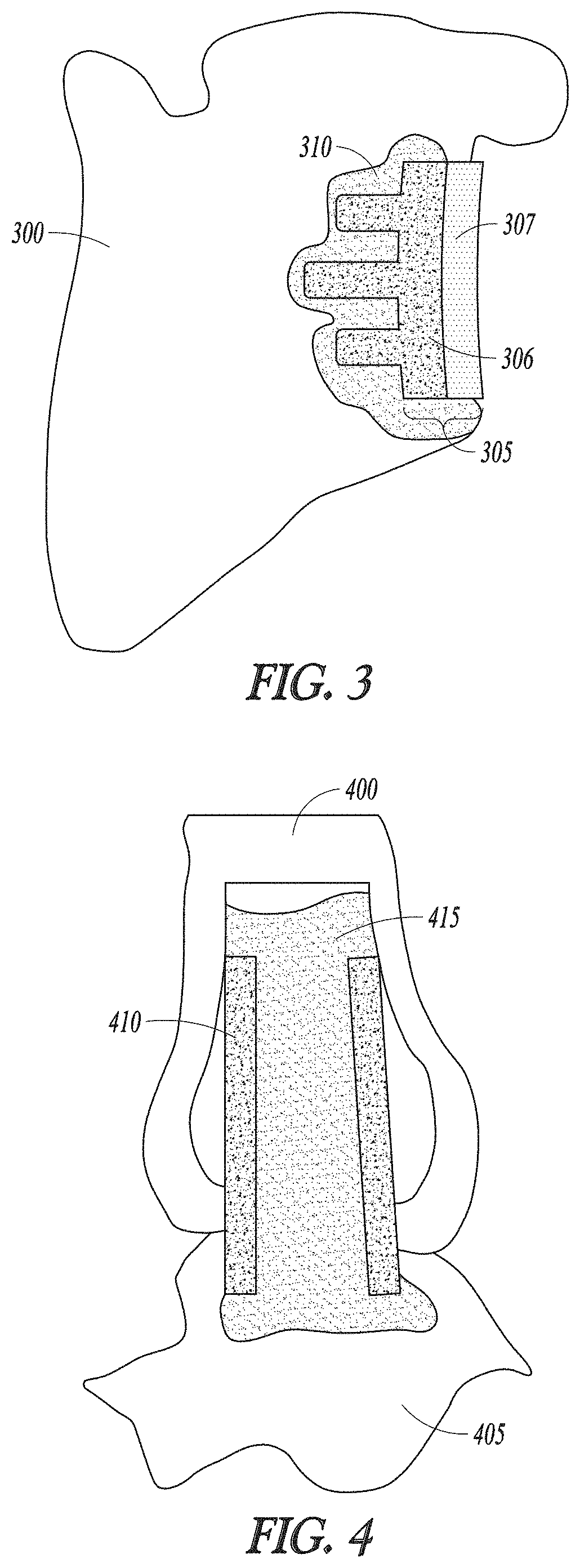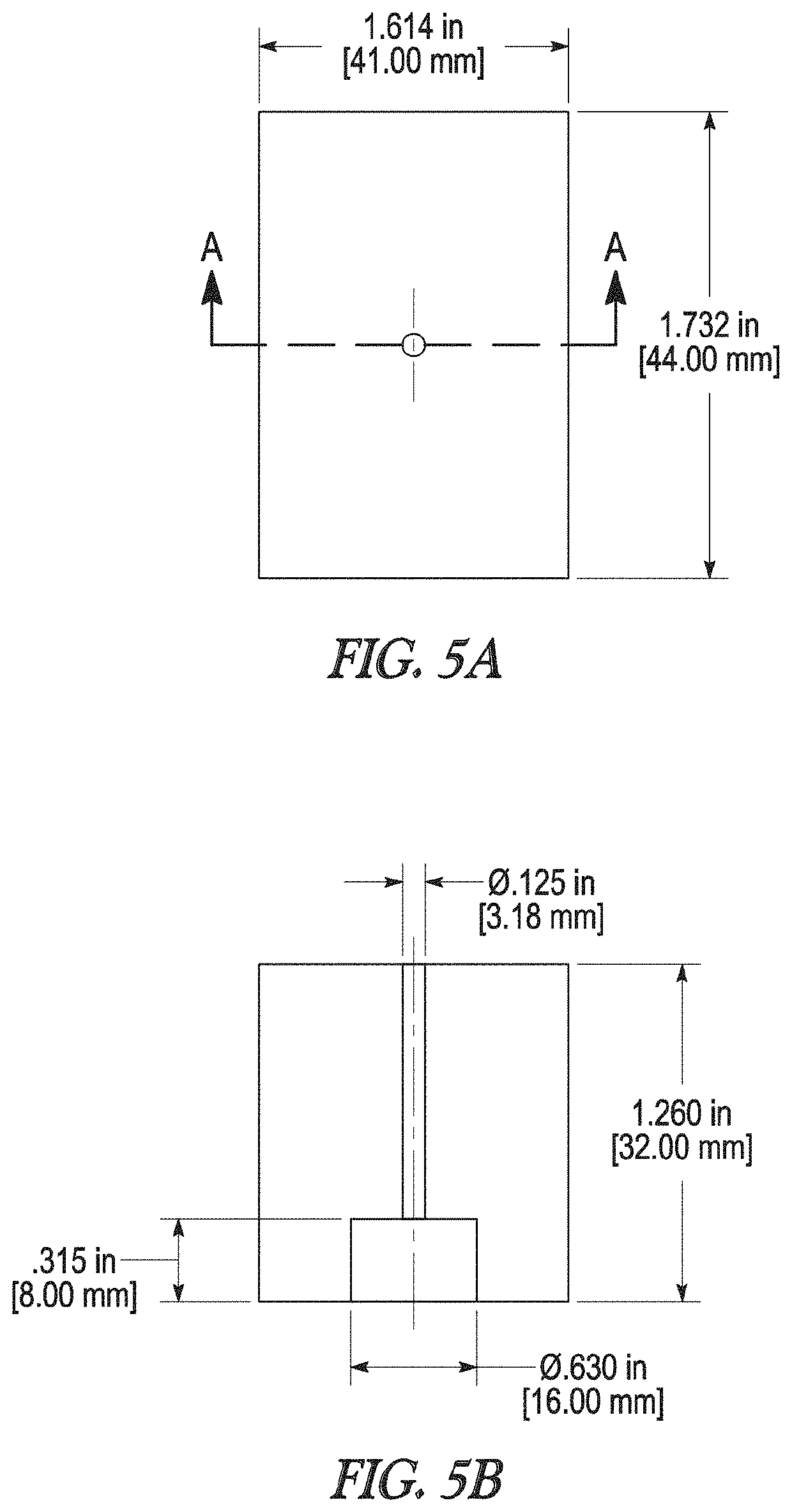Curable calcium phosphate compositions for use with porous structures and methods of using the same
a technology of porous structure and composition, which is applied in the direction of prosthesis, coating, pharmaceutical delivery mechanism, etc., can solve the problems of increasing the likelihood of revision surgery, slowing healing and osteo-incorporation into the implant, and decreasing the security and rigidity of the implant seated in the remaining host bone, so as to reduce the chance of implant loosening, increase contact, and reduce the effect of implant loosening
- Summary
- Abstract
- Description
- Claims
- Application Information
AI Technical Summary
Benefits of technology
Problems solved by technology
Method used
Image
Examples
example 1-1
[0061]A low density lyophilized calcium carboxymethylcellulose is mixed in the dry state with a reactive calcium deficient (Ca:P ratio of less than 1.67) calcium phosphate (an amorphized 1:1 mixture by mass of amorphous calcium phosphate and dicalcium phosphate dihydrate), forming a mixture that is about 5.5 wt % calcium carboxymethylcellulose and about 94.5 wt % amorphous calcium phosphate. The dry powder mixture is then mixed with deionized water, forming a mixture that is 45 wt % deionized water. A flowable paste results which, upon dissociation of Ca2+ ions, hardens into a crystalline solid. The flowable paste perfuses porous trabecular structures without phase separation of the calcium phosphate from the aqueous cellulose derivative.
example 1-2
[0062]Sodium alginate is mixed in solution with a 1:1 by weight mixture of reactive amorphous calcium phosphate and a calcium deficient carbonate apatite (having a Ca:P molar ratio of less than 1.67 with CO32− ions occupying both A (OH− substitutions) and B (PO43− substitutions) sites in the apatite lattice), forming a mixture that has a weight ratio of sodium alginate to the mixture of reactive amorphous calcium phosphate and the calcium deficient carbonate apatite of 5.5:94.5. The mixture is lyophilized. The dry powder is then mixed with deionized water to form a mixture that is 45 wt % deionized water. A flowable paste results which, upon dissociation of Ca2+ ions from the carbonate apatite, hardens into a crystalline solid. The flowable paste perfuses porous trabecular structures without phase separation of the calcium phosphate from the aqueous sodium alginate.
example 1-3
[0063]Sodium carboxymethylcellulose is lyophilized with CaCO3 and mixed in the dry state with a reactive calcium deficient amorphous calcium phosphate (an amorphized 1:1 mixture by mass of amorphous calcium phosphate and dicalcium phosphate dihydrate) with a sodium carboxymethylcellulose to reactive calcium deficient amorphous calcium phosphate weight ratio of 5.5:94.5. The dry powder is then mixed with autologous blood to form a mixture that is 45 wt % autologous blood. A flowable paste results which, upon dissociation of Ca2+ and metal carbonate ions, hardens into a crystalline carbonate apatite solid. The flowable paste perfuses porous trabecular structures without phase separation of the calcium phosphate from the aqueous cellulose derivative.
Part II
[0064]This Part compares the injectability and performance of various calcium phosphate bone substitute materials (BSMs) that were injected into a porous metal Trabecular Metal™ (TMT) block (1.614 in×1.732 in). Performance characteri...
PUM
| Property | Measurement | Unit |
|---|---|---|
| pore diameters | aaaaa | aaaaa |
| specific compressive strength | aaaaa | aaaaa |
| depth | aaaaa | aaaaa |
Abstract
Description
Claims
Application Information
 Login to View More
Login to View More - R&D
- Intellectual Property
- Life Sciences
- Materials
- Tech Scout
- Unparalleled Data Quality
- Higher Quality Content
- 60% Fewer Hallucinations
Browse by: Latest US Patents, China's latest patents, Technical Efficacy Thesaurus, Application Domain, Technology Topic, Popular Technical Reports.
© 2025 PatSnap. All rights reserved.Legal|Privacy policy|Modern Slavery Act Transparency Statement|Sitemap|About US| Contact US: help@patsnap.com



